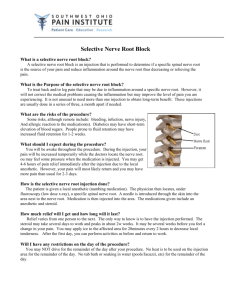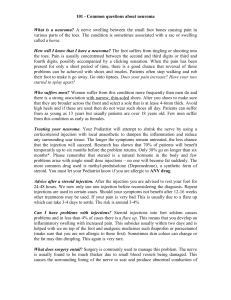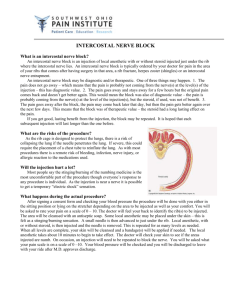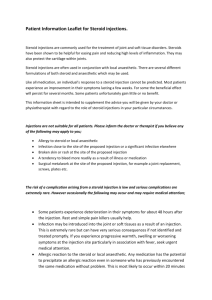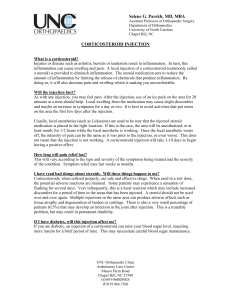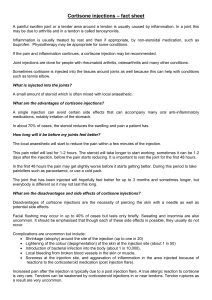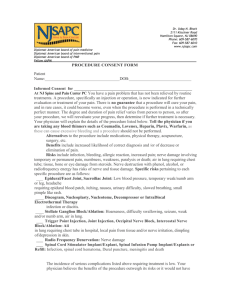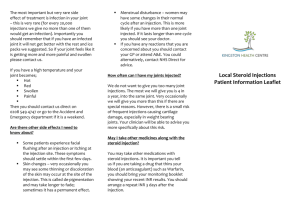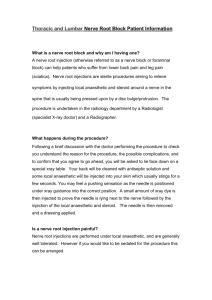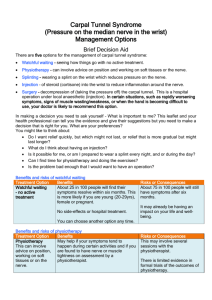Sensory Nerve Root Block (SNRB)
advertisement
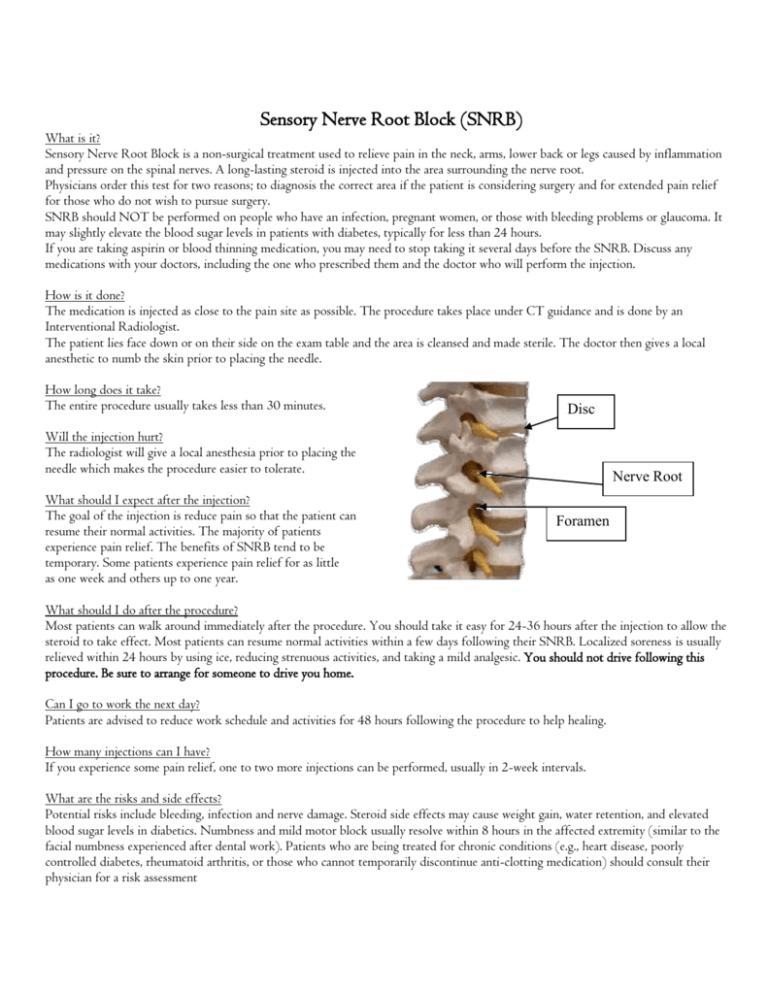
Sensory Nerve Root Block (SNRB) What is it? Sensory Nerve Root Block is a non-surgical treatment used to relieve pain in the neck, arms, lower back or legs caused by inflammation and pressure on the spinal nerves. A long-lasting steroid is injected into the area surrounding the nerve root. Physicians order this test for two reasons; to diagnosis the correct area if the patient is considering surgery and for extended pain relief for those who do not wish to pursue surgery. SNRB should NOT be performed on people who have an infection, pregnant women, or those with bleeding problems or glaucoma. It may slightly elevate the blood sugar levels in patients with diabetes, typically for less than 24 hours. If you are taking aspirin or blood thinning medication, you may need to stop taking it several days before the SNRB. Discuss any medications with your doctors, including the one who prescribed them and the doctor who will perform the injection. How is it done? The medication is injected as close to the pain site as possible. The procedure takes place under CT guidance and is done by an Interventional Radiologist. The patient lies face down or on their side on the exam table and the area is cleansed and made sterile. The doctor then gives a local anesthetic to numb the skin prior to placing the needle. How long does it take? The entire procedure usually takes less than 30 minutes. Disc Will the injection hurt? The radiologist will give a local anesthesia prior to placing the needle which makes the procedure easier to tolerate. What should I expect after the injection? The goal of the injection is reduce pain so that the patient can resume their normal activities. The majority of patients experience pain relief. The benefits of SNRB tend to be temporary. Some patients experience pain relief for as little as one week and others up to one year. Nerve Root Foramen What should I do after the procedure? Most patients can walk around immediately after the procedure. You should take it easy for 24-36 hours after the injection to allow the steroid to take effect. Most patients can resume normal activities within a few days following their SNRB. Localized soreness is usually relieved within 24 hours by using ice, reducing strenuous activities, and taking a mild analgesic. You should not drive following this procedure. Be sure to arrange for someone to drive you home. Can I go to work the next day? Patients are advised to reduce work schedule and activities for 48 hours following the procedure to help healing. How many injections can I have? If you experience some pain relief, one to two more injections can be performed, usually in 2-week intervals. What are the risks and side effects? Potential risks include bleeding, infection and nerve damage. Steroid side effects may cause weight gain, water retention, and elevated blood sugar levels in diabetics. Numbness and mild motor block usually resolve within 8 hours in the affected extremity (similar to the facial numbness experienced after dental work). Patients who are being treated for chronic conditions (e.g., heart disease, poorly controlled diabetes, rheumatoid arthritis, or those who cannot temporarily discontinue anti-clotting medication) should consult their physician for a risk assessment
